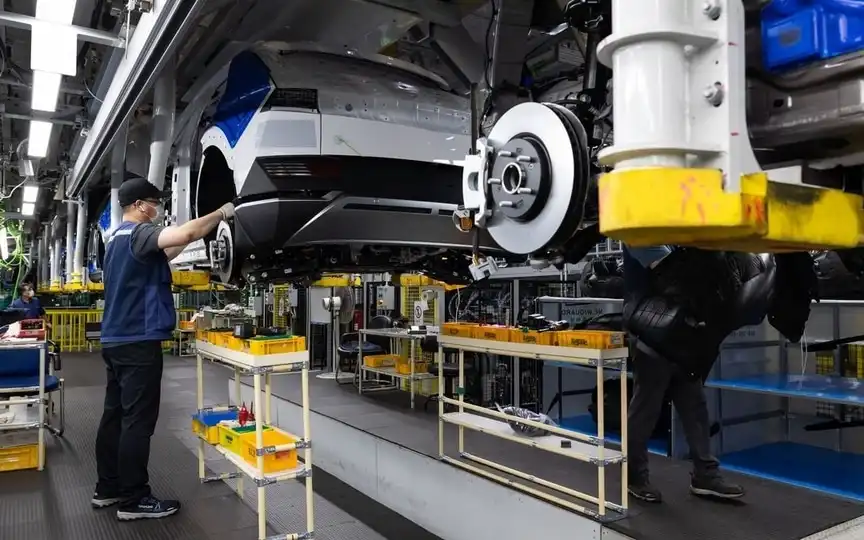Electric Vehicle Market Faces Imminent Collapse Due to Two-Speed System
Car manufacturers are facing a dual acceleration in the global auto industry, which could potentially lead to detrimental consequences if the conflicting factors are not addressed promptly.
In China and Europe, the transition to electric vehicles is accelerating. According to Morgan Stanley, battery-powered cars accounted for almost a quarter of sales in both markets in August. Plug-in hybrids increased the total share to 38 percent and 28 percent.
Things look very different in the US and India, where penetration is trying to break north of 10%, and in Japan, where it’s at 3%. Honda Motor Co. said last week it was abandoning plans to build a sub-$30,000 electric car with General Motors Co., while GM and Ford Motor Co. have postponed targets to increase sales of battery vehicles. Even Elon Musk has played down views that Tesla Inc.’s Cybertruck will increase volumes anytime soon.
You might think that the shift from money-losing EVs to gas-guzzling SUVs and convertibles that people are still willing to pay for was just an industry tonic. Automaker price-to-earnings ratios are typically in the low single digits these days (the S&P 500 is much stronger at 17.6). Ford, meanwhile, just agreed to a 25 percent pay rise with striking auto workers, adding pressure to margins and raising the prospect of similar anti-inflation deals with its U.S. rivals. Maybe industry leaders could wake up and realize that the EV march was just a dream?
If only it were that simple. What’s coming to the industry could be the worst of both worlds: a global market split between countries rushing to cut carbon emissions and another where the electric revolution looks shaky. That means it will pay longer to develop separate gasoline and electric powertrains, rather than making a clean switch from one to the other.
Manufacturing and improving automotive product lines is a terribly expensive business. Volkswagen AG and Toyota Motor Corp. spend more money on capital expenditures than Exxon Mobil Corp., Walmart Inc. and Intel Corp., and BYD Co. is not far behind. Renovating factories with self-propelled assembly lines and gigapresses designed for electric cars is a once-in-a-century change that will inevitably be expensive. Ford last year put a $50 billion five-year price tag on growing its electric car division — enough to consume nearly two-thirds of its investment budget, plus tens of billions to spend on acquisitions and engineering.
That doesn’t leave much money for traditional internal combustion engines. One of the reasons why traditional vehicles are so profitable right now is precisely because the investments in them are being phased out. Product lines are being simplified and product development is being reduced as sales of non-electric cars are coming to zero in major markets in less than a decade. This lowers the cost base and increases profit margins – but if the transition to electric cars is delayed, money has to flow back to keep the product offering from becoming obsolete.
That explains the negative reaction among automakers to British Prime Minister Rishi Sunak, who this month moved the country’s 2030 ban on conventional cars to 2035. Ford, Kia Corp., Nissan Motor Co., Stellantis NV and Volkswagen were far from welcoming the announcement. complained that it created uncertainty and made it difficult to coordinate international supply chains.
If you thought Sunak’s U-turn was chaotic, the current two-speed market is even more treacherous. Try sketching a nine-figure multi-year consumer budget when faced with unanswered questions about consumer choice, charging infrastructure and fuel economy regulation in multiple jurisdictions. The largest US and Chinese car manufacturers are at least lucky enough to focus heavily on their home markets. Everyone else has to ride multiple horses at once.
Things are likely to get worse before they get better. According to Bloomberg Intelligence’s Joanna Chen and Steve Man, EVs are competing on price with conventional cars in China right now, while EV maker BYD’s margins are already in line with comparable gasoline-powered brands. In other countries, however, BloombergNEF sees parity dates varying between 2025 and 2031. That’s two three-year product cycles where, even in the best-case scenario, consumer tastes — and investment priorities — remain split between one changing world. to electricity and another that sticks to gas.
Turning back isn’t an option — but auto executives will have to wade through a lot more red ink in the coming years.




